09/24/2024S
DW
DW
The world’s largest rainforest is battling deforestation, drought and record wildfires. Where is the money to save it coming from?
When the Amazon burns it has an impact far beyond its own boundaries
Image: Edmar Barros/AP/picture alliance
While deforestation rates fell by nearly 50% in 2023, the Amazon continues to battle critical threats.
In recent months, it has suffered a devastating drought and record wildfires, which release large amounts of planet-heating greenhouse gases. Fire alerts are 79% higher than average for this time of year.
The Amazon has shrunk by the size of France and Germany in the last four decades, according to a report this week, with researchers noting an "alarming increase" in forest land cleared for mining, agriculture or livestock farming.
Scientists fear up to half the rainforest could hit a "tipping point" by 2050 due to unprecedented stress from warming temperatures, extreme drought, deforestation and wildfires. They warn crossing this threshold could intensify regional climate change and risk the Amazon becoming permanently degraded or turning into savanna.
Who should pay for the Amazon's protection?
The vast rainforest is not only a source of immense biodiversity, its trees and soil store the equivalent of 15-20 years of CO2 emissions and help stabilize the Earth's temperatures.
As such, Jack Hurd, executive director of the Tropical Forest Alliance, which supports companies in removing deforestation from their supply chains sees a global responsibility to preserve the Amazon so it can continue to provide "goods and services for now and into the future."
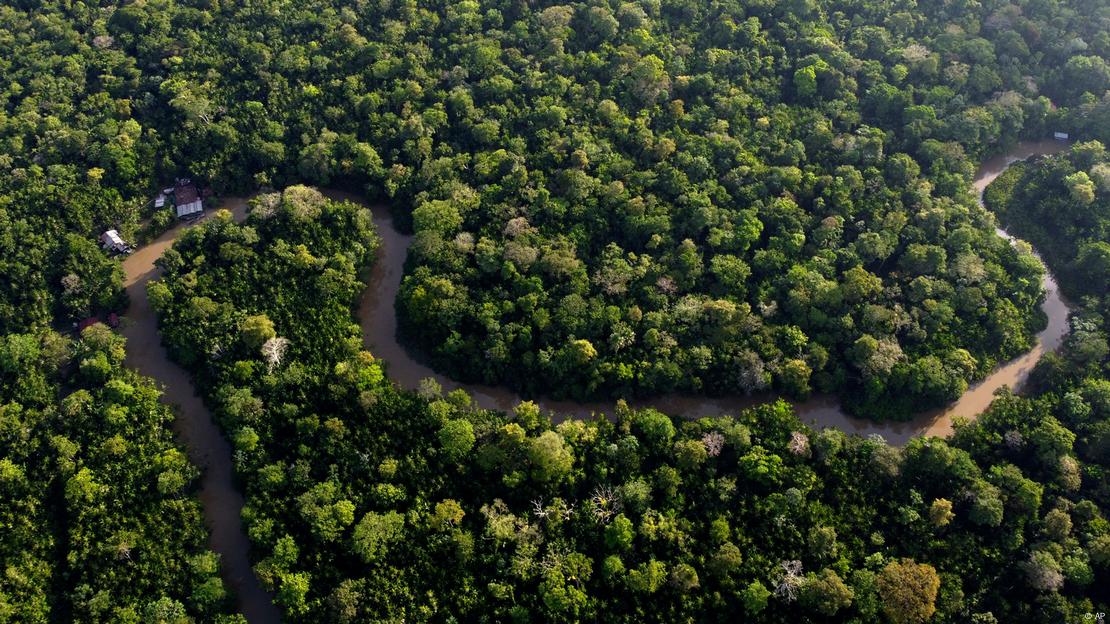
While deforestation rates fell by nearly 50% in 2023, the Amazon continues to battle critical threats.
In recent months, it has suffered a devastating drought and record wildfires, which release large amounts of planet-heating greenhouse gases. Fire alerts are 79% higher than average for this time of year.
The Amazon has shrunk by the size of France and Germany in the last four decades, according to a report this week, with researchers noting an "alarming increase" in forest land cleared for mining, agriculture or livestock farming.
Scientists fear up to half the rainforest could hit a "tipping point" by 2050 due to unprecedented stress from warming temperatures, extreme drought, deforestation and wildfires. They warn crossing this threshold could intensify regional climate change and risk the Amazon becoming permanently degraded or turning into savanna.
Who should pay for the Amazon's protection?
The vast rainforest is not only a source of immense biodiversity, its trees and soil store the equivalent of 15-20 years of CO2 emissions and help stabilize the Earth's temperatures.
As such, Jack Hurd, executive director of the Tropical Forest Alliance, which supports companies in removing deforestation from their supply chains sees a global responsibility to preserve the Amazon so it can continue to provide "goods and services for now and into the future."

Ofter referred to as the "lungs of the Earth" the Amazon rainforest spans more than six million square kilomters across eight countriesImage: AP
Although nearly two-thirds of the Amazon lies in Brazil, the vast rainforest spans eight countries, including Colombia, Peru and Bolivia.
Its forests are worth more alive and standing than cut or destroyed, according to data from the World Bank. The Brazilian Amazon alone generates an annual value of $317 billion (€284 billion), a calculation based largely on the value it holds to the world as a carbon store. This far surpasses the $43 billion-$98 billion (€38.6 billion-€88 billion) estimated value of clearing the rainforest for timber, farming or mining.
Jessica Villanueva, senior manager in sustainable finance Americas at WWF, emphasized the need for multiple actors in funding protection, "Efforts must unite all eight Amazon countries, including governments, companies, and financial institutions."
Is there a global protection fund?
The largest global fund is the Amazon Fund, set up by the Brazilian government in 2008 to raise international donations for the reduction of deforestation and forest degradation.
To date, it has received over $1.4 billion, with Norway and Germany the largest donors, although Switzerland, the US, the UK, Japan and the Brazilian-owned oil and gas company Petrobras have also contributed.Brazilian President Luiz Inácio Lula da Silva revived the fund when he took office in 2023 after Western donors paused contributions during the term of previous leader Jair Bolsonaro, who oversaw a sharp rise in deforestation rates.
The fund, which is managed by the Brazilian Development Bank, finances a range of projects including those related to wildfire prevention, support for Indigenous lands and conservation areas, as well as sustainable development and monitoring environmental crime. It claims it has extended protected areas of the forest with strengthened environmental management by 74 million hectares.
Although nearly two-thirds of the Amazon lies in Brazil, the vast rainforest spans eight countries, including Colombia, Peru and Bolivia.
Its forests are worth more alive and standing than cut or destroyed, according to data from the World Bank. The Brazilian Amazon alone generates an annual value of $317 billion (€284 billion), a calculation based largely on the value it holds to the world as a carbon store. This far surpasses the $43 billion-$98 billion (€38.6 billion-€88 billion) estimated value of clearing the rainforest for timber, farming or mining.
Jessica Villanueva, senior manager in sustainable finance Americas at WWF, emphasized the need for multiple actors in funding protection, "Efforts must unite all eight Amazon countries, including governments, companies, and financial institutions."
Is there a global protection fund?
The largest global fund is the Amazon Fund, set up by the Brazilian government in 2008 to raise international donations for the reduction of deforestation and forest degradation.
To date, it has received over $1.4 billion, with Norway and Germany the largest donors, although Switzerland, the US, the UK, Japan and the Brazilian-owned oil and gas company Petrobras have also contributed.Brazilian President Luiz Inácio Lula da Silva revived the fund when he took office in 2023 after Western donors paused contributions during the term of previous leader Jair Bolsonaro, who oversaw a sharp rise in deforestation rates.
The fund, which is managed by the Brazilian Development Bank, finances a range of projects including those related to wildfire prevention, support for Indigenous lands and conservation areas, as well as sustainable development and monitoring environmental crime. It claims it has extended protected areas of the forest with strengthened environmental management by 74 million hectares.
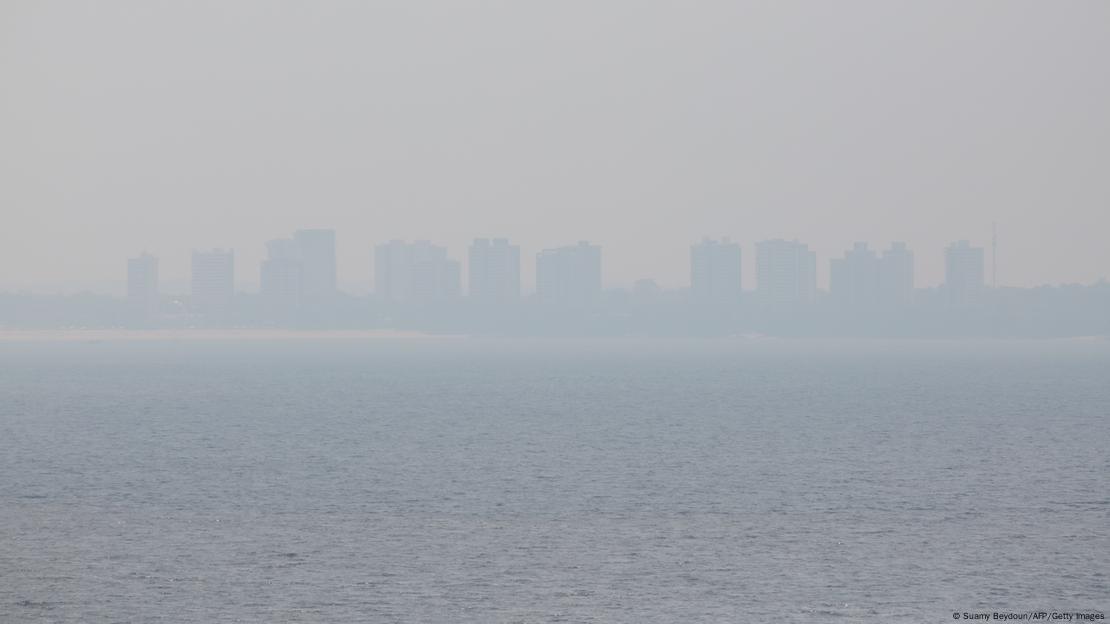
With more than 35,000 fires recorded in the Brazilian Amazon in the first eight months of this year, smoke has drifted to cities as wellImage: Suamy Beydoun/AFP/Getty Images
However, while the Amazon Fund is important, it does not provide the level of financing needed to fully protect the region, said Cristiane Fontes, executive director of global research nonprofit World Resources Institute Brazil.
Where else is money coming from?
In addition to the Amazon Fund there are also tens of millions of dollars going into the region largely from foundations and bilateral agencies, said Hurd, who is also a member of the World Economic Forum executive committee.
An estimated nearly $5.81 billion has been allocated to protection and sustainable management by international donors since 2013, according to a recent study. Funders include bilateral and multilateral agencies, private foundations, NGOs and companies.
Germany, Norway and the United States made up almost half of donations between 2020-2022 and private foundations, such as the Bezos Earth Fund, accounted for a quarter. National governments in the Amazon region received 30% of these funds, followed by NGOs.
While there is no readily available information on public funding figures, protection is mostly financed by public money and multilateral donors, said Andrea Carneiro, conservation strategist from the US-based environmental organization Rainforest Trust. They added there are various financing gaps, including for protection in Bolivia and Peru, as well as management funds for Indigenous territories.
However, while the Amazon Fund is important, it does not provide the level of financing needed to fully protect the region, said Cristiane Fontes, executive director of global research nonprofit World Resources Institute Brazil.
Where else is money coming from?
In addition to the Amazon Fund there are also tens of millions of dollars going into the region largely from foundations and bilateral agencies, said Hurd, who is also a member of the World Economic Forum executive committee.
An estimated nearly $5.81 billion has been allocated to protection and sustainable management by international donors since 2013, according to a recent study. Funders include bilateral and multilateral agencies, private foundations, NGOs and companies.
Germany, Norway and the United States made up almost half of donations between 2020-2022 and private foundations, such as the Bezos Earth Fund, accounted for a quarter. National governments in the Amazon region received 30% of these funds, followed by NGOs.
While there is no readily available information on public funding figures, protection is mostly financed by public money and multilateral donors, said Andrea Carneiro, conservation strategist from the US-based environmental organization Rainforest Trust. They added there are various financing gaps, including for protection in Bolivia and Peru, as well as management funds for Indigenous territories.
However, gaining an accurate overview of how much money is flowing into protection is difficult, Hurd said. "You're going to see a range of estimates as to what's actually going into this, because people are counting things in different ways."
Notions of protection differ depending on whether they are dealing with Amazon land that is intact, degraded or cleared for activities like mining or agriculture, he continued. "This is not just about 'here's a protected forest that we need to cordon off and figure out how to manage,' like a national park might be in Europe or North America."
What more needs to be done?
To prevent the Amazon from reaching a tipping point, the global donor community, public budgets and the private sector need to urgently increase their commitments, said Villanueva.
Maintaining 80% of the region within conservation areas — which would include Indigenous lands — would require between $1.7 billion-$2.8 billion annually as well as $1-1.6 billion in establishment costs, according to one recent estimate.
As public financing alone will not be enough to close the funding gap, governments need to implement financial regulations and incentives to encourage companies to move towards an economy with zero deforestation, Villanueva said. "It is imperative to attract private investors and build the capacity of nature-based solution projects to leverage private capital."
What's needed is to find ways to honor the value of standing forests and transition to a more sustainable economic model in the region, Fontes said. A recent report from the WRI highlighted that transitioning to a deforestation-free economy which includes low-emissions agriculture and forest restoration would require around 1% of Brazil's GDP per year, amounting to around US $533 billion by 2050.
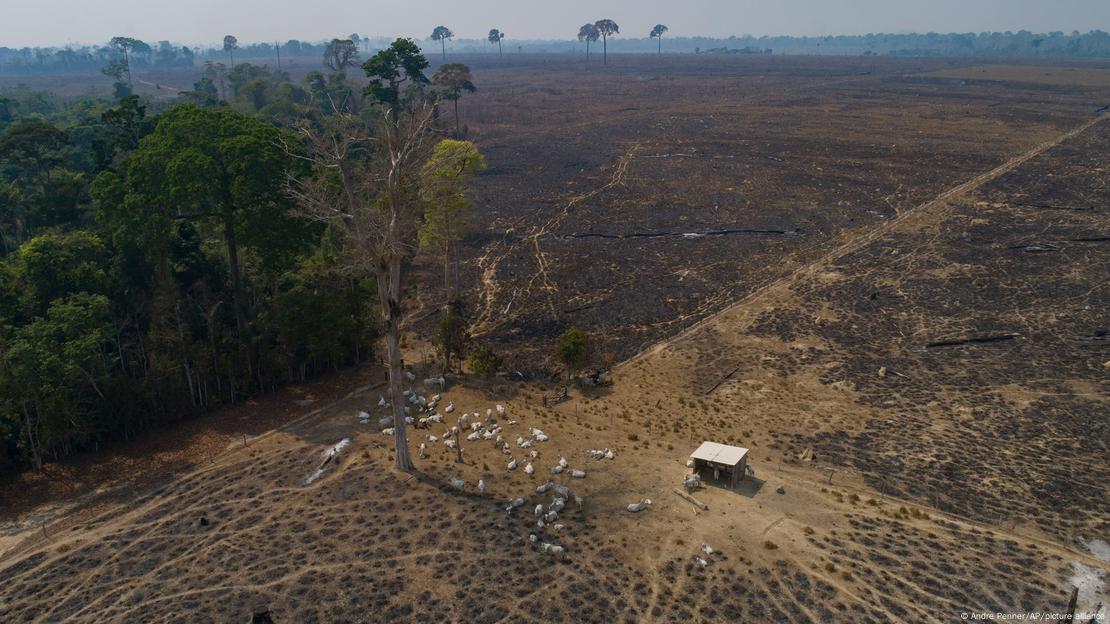
Deforestation, whether legal or illegal, contributes to the land drying out and creating ideal conditions for forest fires to spreadImage: Andre Penner/AP/picture alliance
Fontes points to the potential of Brazil's Tropical Forests Forever Facility (TFFF), a proposed multilateral investment pot to preserve rainforests worldwide which would aim to raise $250 billion from countries with sovereign wealth funds and other private investors. "It's a fund that really would support Brazil — and other countries — in its transition from an extractive economy to a sustainable one."
Alongside TFFF, another long-term solution for Amazon protection can be found in the Jurisdictional Redd+ (JREDD) funding mechanism, said José Otavio Passos, Amazon director at US-based environmental organization The Nature Conservancy . Through JREDD, companies or governments provide payments to states or nations for deforestation reductions across large areas in return for verified carbon credits.
Last month, the World Bank also announced a $225 million Amazon reforestation bond, that links financial returns for investors to carbon removal from the atmosphere.
"There is a lot that the rich countries can do. There is a lot that Brazilian government can do. There's a lot that the private sector can do, and we need to do it faster. Every one of us," said Passos.
Edited by: Tamsin Walker
Forest fires rage in Brazil
Wildfires from the Amazon to Sao Paulo: While the worst forest fires in the south of the country are now under control, flames continue to rage in the north.Image: JOEL SILVA/REUTERS
Fontes points to the potential of Brazil's Tropical Forests Forever Facility (TFFF), a proposed multilateral investment pot to preserve rainforests worldwide which would aim to raise $250 billion from countries with sovereign wealth funds and other private investors. "It's a fund that really would support Brazil — and other countries — in its transition from an extractive economy to a sustainable one."
Alongside TFFF, another long-term solution for Amazon protection can be found in the Jurisdictional Redd+ (JREDD) funding mechanism, said José Otavio Passos, Amazon director at US-based environmental organization The Nature Conservancy . Through JREDD, companies or governments provide payments to states or nations for deforestation reductions across large areas in return for verified carbon credits.
Last month, the World Bank also announced a $225 million Amazon reforestation bond, that links financial returns for investors to carbon removal from the atmosphere.
"There is a lot that the rich countries can do. There is a lot that Brazilian government can do. There's a lot that the private sector can do, and we need to do it faster. Every one of us," said Passos.
Edited by: Tamsin Walker
Forest fires rage in Brazil
Wildfires from the Amazon to Sao Paulo: While the worst forest fires in the south of the country are now under control, flames continue to rage in the north.Image: JOEL SILVA/REUTERS
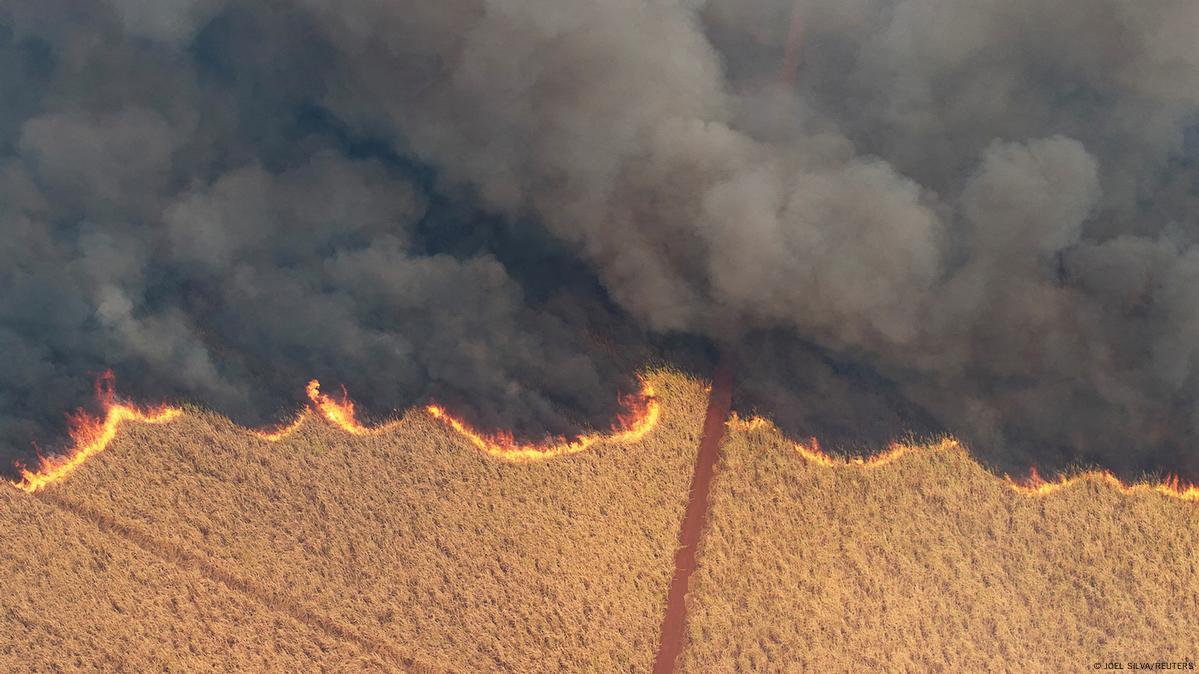
Millions breathing black smoke
Last Friday alone, Brazil's state climate institute INPE registered almost 5,000 fires throughout the country. Several cities with millions of inhabitants are shrouded in thick clouds of smoke, including Manaus on the Rio Negro. In the Amazon region, 1,700 fires were counted. Many communities in Brazil have declared a state of emergency.Image: Bruno Kelly/REUTERS
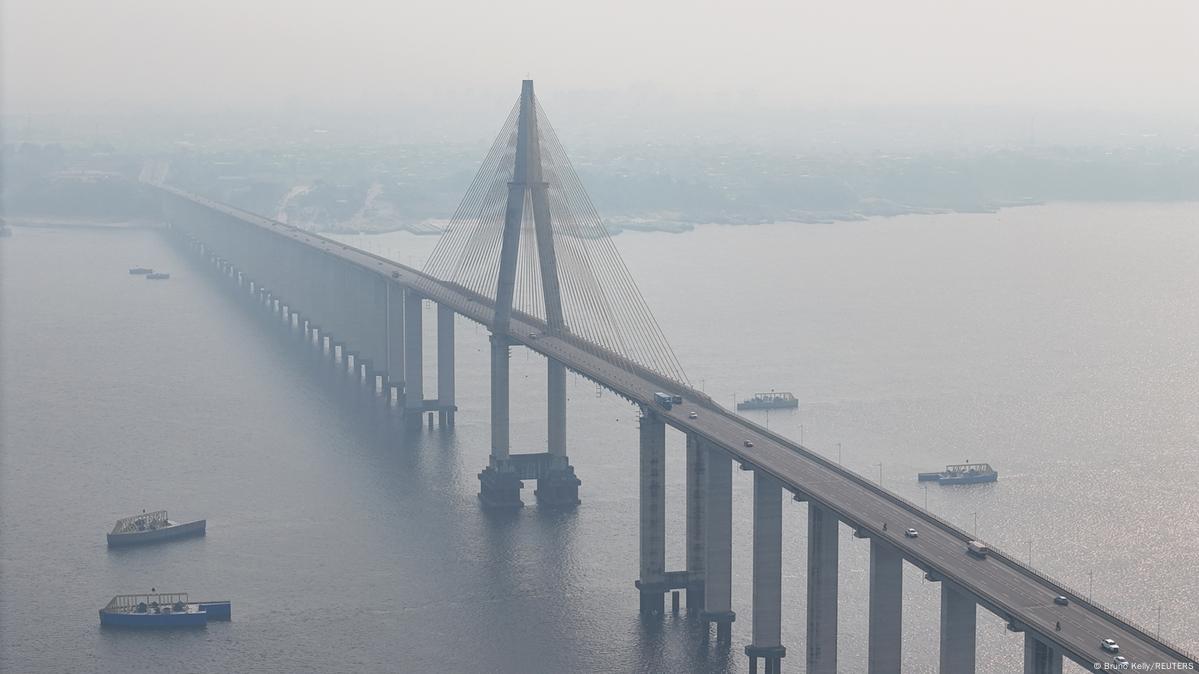
Fires countrywide
Hardly any place in Brazil has been spared. Smoke stretches over 4,000 kilometers from the Amazon in the north through the Pantanal wetlands in western Brazil to the south-eastern state of Sao Paulo, one of the country's most important agricultural areas.Image: CARLOS FABAL/AFP/Getty Images


Close call
Shortly before flames reached a luxury residential complex in São Paulo, the fire on a neighboring plantation was stopped. According to authorities, fires have killed at least two people in the state, and destroyed more than 20,000 hectares of land since last Thursday. The local government is talking about damage amounting to €150 million ($167 million).Image: Joel Silva/REUTERS


Arson to blame
In the vast majority of cases, arson is thought to be the cause of the fires. Illegal slash-and-burn practices are used to create pastures for livestock and agriculture. The federal police and environmental authorities are investigating dozens of cases. Three people were arrested for arson over the weekend.Image: JOEL SILVA/REUTERS


Worst fires in 17 years
Manaus, the capital of the Brazilian state of Amazonas, was shrouded in smoke on Tuesday. The fiercest fires in 17 years are raging in the Amazon, with 60,000 counted since the beginning of the year. The entire rainforest region in South America is affected by a severe drought, which experts believe is linked to the El Nino weather pattern and climate change.Image: Edmar Barros/AP Photo/picture alliance


Record droughts
The fires are compounded by drought. Sandbanks are rising out of the Rio Madeira, a tributary of the Amazon. The river levels have been falling since the beginning of June, a month earlier than usual. Low water levels mean that villages and towns in the region are cut off from supplies and authorities fear that the current drought could even exceed last year's record-breaking drought.Image: EVARISTO SA/AFP/Getty Images


International cooperation
Brazil is not the only country affected by the fires. According to the authorities, there are currently around 22,000 active fires in neighboring Bolivia too, which have burned around 2 million hectares of land so far. On Tuesday, Brazil and Bolivia announced their intention to fight the fires in the border region together.Image: Marcelo Camargo/dpa/Agencia Brazil/picture alliance


Political setback
The fires are a serious political setback for Brazil's left-wing President Luiz Inacio Lula da Silva. He had promised to protect the rainforest and stop illegal deforestation by 2030. Under his predecessor Jair Bolsonaro, the destruction of the rainforest reached new highs.Image: LOURIVAL IZAQUE/AFP/Getty Images



No comments:
Post a Comment